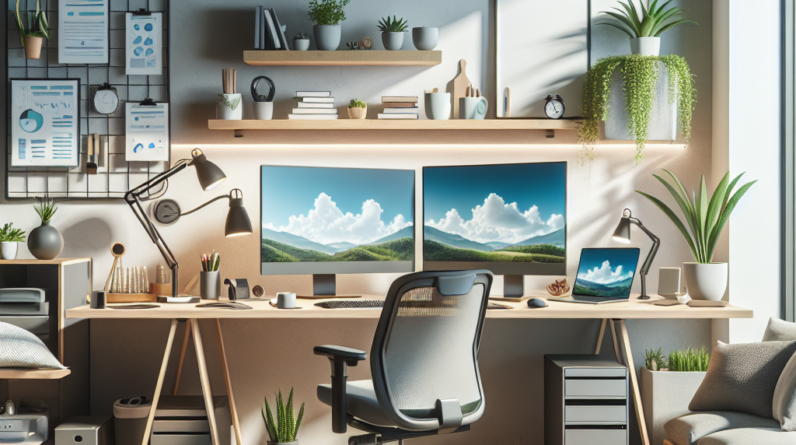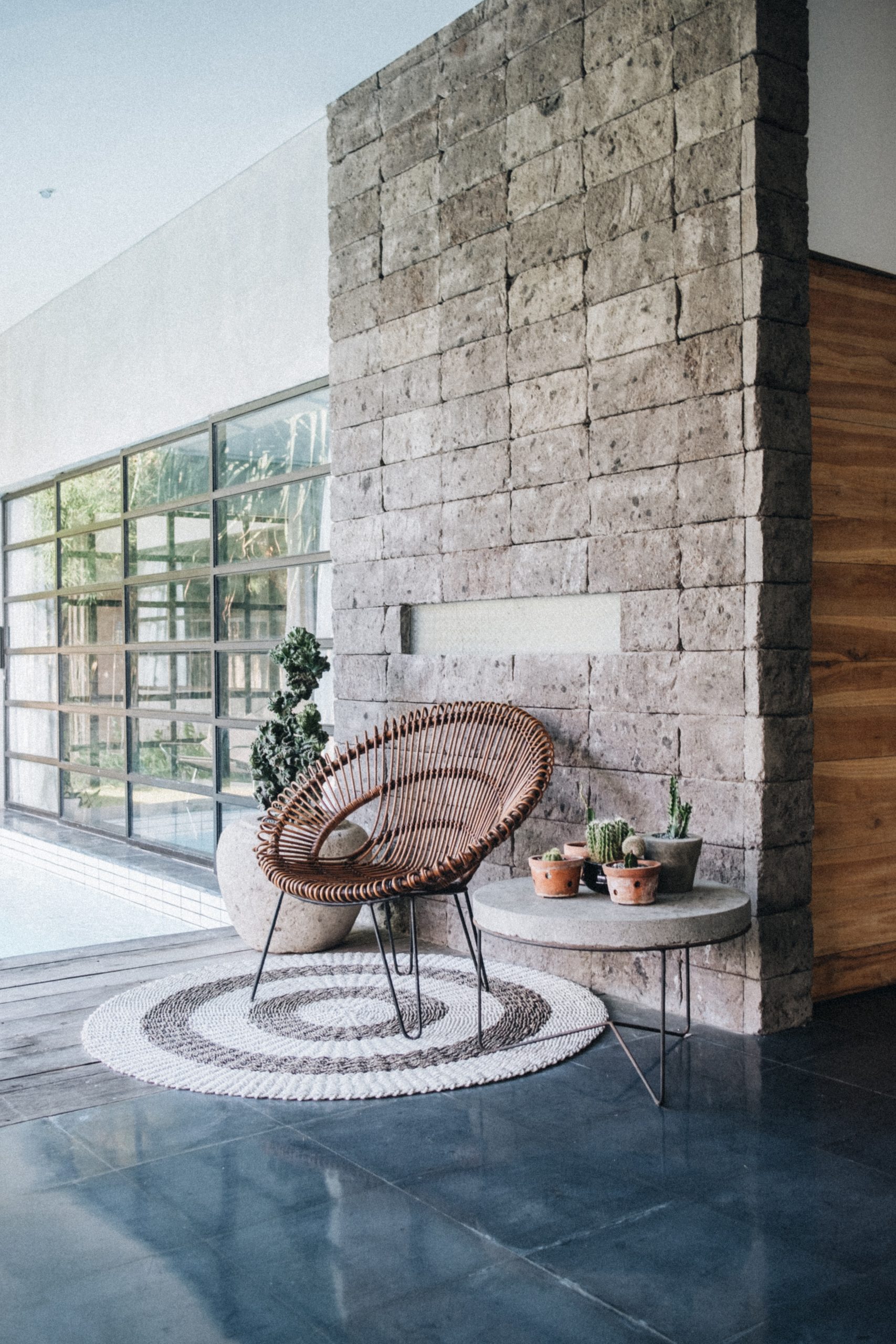
Are you looking to create a productive home office that will help you stay focused and organized? Look no further! In this guide, we will provide you with all the tips and tricks you need to set up the ultimate workspace right in the comfort of your own home. From choosing the perfect location to selecting the right furniture and accessories, we’ve got you covered. Get ready to transform your home office into a haven of productivity and efficiency.
Choosing the Right Space
Assessing your needs
When it comes to setting up a productive home office, the first step is to assess your needs. Consider what tasks you will be performing in your home office and what resources you will require. Are you primarily working on a computer, or do you need space for other activities? Will you be meeting with clients or colleagues? By understanding your needs, you can create a space that caters to your specific requirements.
Considerations for location
The location of your home office is crucial for productivity. Ideally, choose a space that is separate from the main living areas to minimize distractions. This could be a spare room, a dedicated corner, or even a converted closet. Additionally, consider the proximity to natural light and any potential sources of noise. A quiet and well-lit area will contribute to a more focused and productive work environment.
Evaluating the available space
Before setting up your home office, evaluate the available space to determine how best to utilize it. Take measurements and consider the layout options. Will you need a large desk or multiple work surfaces? Is there enough storage for your supplies and documents? By assessing the available space, you can make informed decisions about furniture placement and organization solutions to optimize your productivity.
Ergonomic Essentials
Selecting a suitable desk and chair
An essential aspect of creating a productive home office is choosing the right desk and chair. Look for a desk that offers ample space for your work activities and has ergonomic features such as adjustable height. Pair it with a comfortable chair that provides proper support for your back and promotes good posture. Investing in quality ergonomic furniture will ensure that you can work comfortably and reduce the risk of developing any musculoskeletal issues.
Ensuring proper lighting
Proper lighting is key to productivity and preventing eye strain. Utilize natural light whenever possible by positioning your desk near a window. Supplement with task lighting, such as a desk lamp, to provide adequate illumination for your work area. Avoid harsh overhead lighting that can cause glare on your computer screen. By optimizing the lighting in your home office, you will create a more comfortable and visually appealing workspace.
Setting up an organized workspace
Maintaining an organized workspace is essential for productivity. Invest in storage solutions like shelves, drawers, or filing cabinets to keep your supplies and documents neatly organized and easily accessible. Use cable management systems to keep your cords and cables tidy and prevent tripping hazards. A clutter-free and organized workspace will help you stay focused and save time searching for essential items.

Creating a Distraction-Free Environment
Minimizing external noise
External noise can be a major distraction when working from a home office. Identify the sources of noise and take steps to minimize their impact. This could involve closing windows, using noise-cancelling headphones, or even adding soundproofing materials to the walls. Additionally, communicate with family members or roommates about your need for a quiet work environment. By minimizing external noise, you can create a more focused space conducive to productivity.
Managing digital distractions
In today’s digitally connected world, it is easy to get distracted by social media notifications, email alerts, and other online distractions. Take control of your digital environment by implementing strategies to minimize these distractions. Turn off non-essential notifications, use browser extensions that limit access to distracting websites during work hours, and establish dedicated times for checking and responding to emails. By managing digital distractions, you can stay focused on your work tasks and optimize your productivity.
Establishing boundaries with family members or roommates
Working from home often means sharing your living space with family members or roommates. It is essential to establish clear boundaries to minimize disruptions and maintain a productive work environment. Communicate your work schedule and expectations regarding noise levels and interruptions. Designate specific areas or times as “work zones” where you are not to be disturbed. By setting boundaries and maintaining open communication, you can create a harmonious and distraction-free home office environment.
Equipping Your Home Office
Investing in essential technology
To ensure efficiency and productivity in your home office, it is important to invest in essential technology. This includes a reliable computer or laptop, a high-quality printer/scanner, and any specialized software or tools required for your work. Take the time to research and choose technology that meets your specific needs and will support your workflow effectively.
Choosing appropriate office supplies
Having the right office supplies on hand is essential for a functional and productive workspace. Stock up on essentials such as pens, paper, notebooks, and folders. Consider any specialized supplies you may need for your work tasks, such as art supplies or specific types of stationery. By having a well-stocked supply of office essentials, you can minimize disruptions and maximize your productivity.
Setting up a reliable internet connection
A stable and reliable internet connection is crucial for a productive home office. Research and choose an internet service provider that offers fast and consistent speeds in your area. Ensure that your home office is within range of your Wi-Fi network or consider using a wired connection for added reliability. By setting up a reliable internet connection, you can avoid frustrating delays and interruptions in your work.
Optimizing Workflow and Productivity
Implementing effective task management systems
Effectively managing your tasks and prioritizing your work is essential for productivity. Explore different task management systems and find one that works best for you. This could involve using a digital task management tool, such as Trello or Asana, or simply using a physical planner or to-do list. Regularly review and update your tasks to stay on top of deadlines and ensure you are making progress on important projects.
Creating a structured daily routine
Establishing a structured daily routine can significantly improve your productivity when working from home. Set specific working hours and stick to them as closely as possible. This will help you create a sense of structure and consistency in your workday. Incorporate dedicated time slots for tasks, breaks, and meals. By following a structured routine, you can optimize your workflow and make the most of your productive hours.
Utilizing productivity apps and tools
Take advantage of productivity apps and tools to streamline your work processes and boost your efficiency. Explore tools that can help with time management, note-taking, project collaboration, and communication. For example, apps like RescueTime can help you track and manage your time usage, while communication tools like Slack can streamline team collaboration. By leveraging productivity apps and tools, you can optimize your workflow and enhance your overall productivity.
Establishing Healthy Habits
Creating a designated work schedule
Creating a designated work schedule is crucial for maintaining a healthy work-life balance. Set clear start and end times for your workday and stick to them as closely as possible. Avoid the temptation to overwork or blur the boundaries between work and personal life. By establishing a designated work schedule, you can maintain a healthier balance and prevent burnout.
Taking regular breaks and incorporating physical activity
Taking regular breaks throughout the day is important for both physical and mental well-being. Get up from your desk, stretch, and move your body. Consider incorporating short bursts of physical activity, such as a quick walk or workout, into your break routine. Physical activity can help re-energize your body and mind, improving focus and productivity when you return to work.
Maintaining a healthy work-life balance
Working from home can blur the boundaries between work and personal life, making it challenging to maintain a healthy balance. Establish clear boundaries between work and personal time. Resist the urge to constantly check emails or respond to work-related matters outside of designated working hours. Dedicate time to hobbies, family, and self-care to ensure a well-rounded and fulfilling life outside of work.
Designing an Inspiring Workspace
Personalizing your office decor
Make your home office a space that reflects your personality and inspires creativity. Add personal touches such as photos, artwork, or sentimental items that make you feel motivated and happy. Choose a color scheme that promotes focus and productivity, such as calming blues or energizing yellows. When your workspace is personalized to your taste, it becomes a place where you feel comfortable and inspired to do your best work.
Adding plants and natural elements
Bringing nature indoors can have a positive impact on your well-being and productivity. Incorporate plants into your home office to improve air quality and create a calming environment. Choose low-maintenance plants such as succulents or peace lilies that thrive indoors. Additionally, consider using natural materials for furniture or decor elements, such as wood or bamboo, to create a soothing and eco-friendly atmosphere.
Incorporating inspirational artwork or quotes
Inspirational artwork or quotes can serve as a source of motivation and positivity in your home office. Hang up posters or framed prints with empowering messages or images that resonate with you. Choose quotes that align with your goals and values, reminding you of what you’re working towards. Surrounding yourself with inspiring visuals can help keep you motivated and focused throughout the workday.
Managing Communication and Collaboration
Choosing suitable communication tools
Effective communication is crucial when working remotely. Choose suitable communication tools that facilitate seamless collaboration with colleagues and clients. This could include video conferencing platforms like Zoom or Microsoft Teams for meetings, and instant messaging apps like Slack or Microsoft Teams for quick exchanges. Evaluate your needs and the preferences of your team to select the most appropriate tools for your remote communication needs.
Establishing clear communication guidelines
To ensure effective communication, establish clear guidelines and expectations for communication within your remote team. Determine preferred methods of communication, response times, and how to handle urgent or non-urgent matters. Emphasize the importance of clear and concise communication to avoid misunderstandings or delays. By setting clear guidelines, you can foster effective communication and collaboration, even when working remotely.
Collaborating effectively with remote team members
Collaboration is essential for many work projects, even when working from home. Foster effective collaboration by utilizing collaborative software and tools such as project management platforms, shared document storage, and virtual whiteboards. Maintain regular check-ins with your team, either through video conferences or collaborative project updates. By actively collaborating with remote team members, you can maintain productivity and ensure that everyone is aligned towards the same goals.

Ensuring Privacy and Data Security
Implementing strong passwords and cybersecurity measures
Protecting your sensitive information and data is crucial when working from home. Implement strong and unique passwords for all your accounts and devices. Enable two-factor authentication whenever possible. Regularly update your software and antivirus programs to ensure they have the latest security patches. By taking these cybersecurity measures, you can significantly reduce the risk of unauthorized access to your data.
Securing sensitive information
Additionally, make sure to securely store and handle any sensitive information you handle while working from home. Invest in a reliable file encryption software to protect important files and documents. Consider using password-protected folders or encryption features on cloud storage platforms. By securing sensitive information, you can work with confidence and protect both your own privacy and that of your clients or colleagues.
Utilizing virtual private networks (VPNs)
When working remotely, it is essential to prioritize data privacy and security. Utilize a virtual private network (VPN) to encrypt your internet connection and protect your online activities from potential hackers or unauthorized access. A VPN can also help bypass region-specific restrictions and ensure a secure connection when accessing sensitive work-related information. By using a VPN, you can work from home with peace of mind knowing that your online activities are secure.
Maintaining a Professional Image
Dressing appropriately for video calls
Video conferencing has become a commonplace tool for remote work communication. When participating in video calls or virtual meetings, it is important to dress appropriately to maintain a professional image. Dress as you would for an in-person meeting, opting for clean and appropriate attire. A professional appearance will ensure that you convey a sense of professionalism and competence to your colleagues and clients.
Having a professional virtual background
In situations where you can’t control your physical environment for video calls, consider using a professional virtual background. Most video conferencing platforms offer the option to replace your background with a virtual image. Choose a plain and professional background to avoid distractions and maintain a clean and polished look. A professional virtual background can help you create a consistent and professional image even in less-than-ideal settings.
Maintaining professionalism in all online interactions
Whether it’s through emails, video calls, or instant messaging, maintaining professionalism in all online interactions is crucial when working from home. Use clear and concise language in your emails, avoiding unnecessary jargon or acronyms. Practice active listening and respectful communication during video calls. Respond promptly to messages and avoid engaging in unprofessional or inappropriate behavior. By maintaining professionalism in all your online interactions, you can build strong professional relationships and enhance your reputation as a remote worker.








